Ghost CBDs: Qld’s abandoned city centres with empty streets and closed stores
Vision taken from within the heart of Queensland’s major metropolitan and regional cities exposes a sad truth that experts say demands a radical shake-up. WATCH THE VIDEO
QLD News
Don't miss out on the headlines from QLD News. Followed categories will be added to My News.
Experts are calling for a radical shake-up of Queensland’s “ghost CBDs” including more luxury residential towers, “affordable” boutique retail precincts and street entertainment as new figures reveal hundreds of shops across the state are languishing empty.
Brisbane has the second-worst retail vacancy rate in Australia, with almost 19 per cent of shops empty, according to a report by real estate agency CBRE.
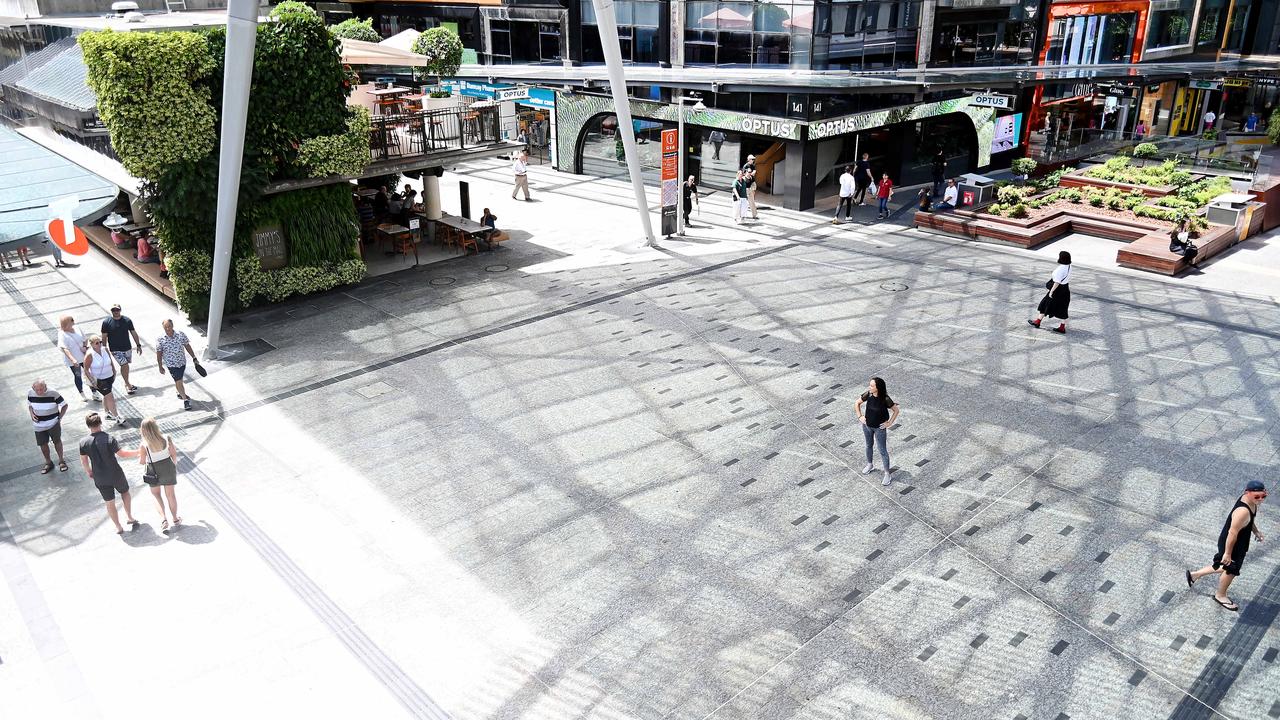
More than 1000 shops in the state’s city centres including 321 in Brisbane are vacant as factors including high rents, cost-of-living pressures, traffic snarls, ongoing work-from-home arrangements and the online shopping boom hit CBDs.
While Brisbane’s overall retail vacancy rate improved slightly to 18.7 per cent in the past quarter, more than 25 per cent of shops in CBD centres are for lease, with the river city rivalled only by Perth as the nation’s worst for vacancies.
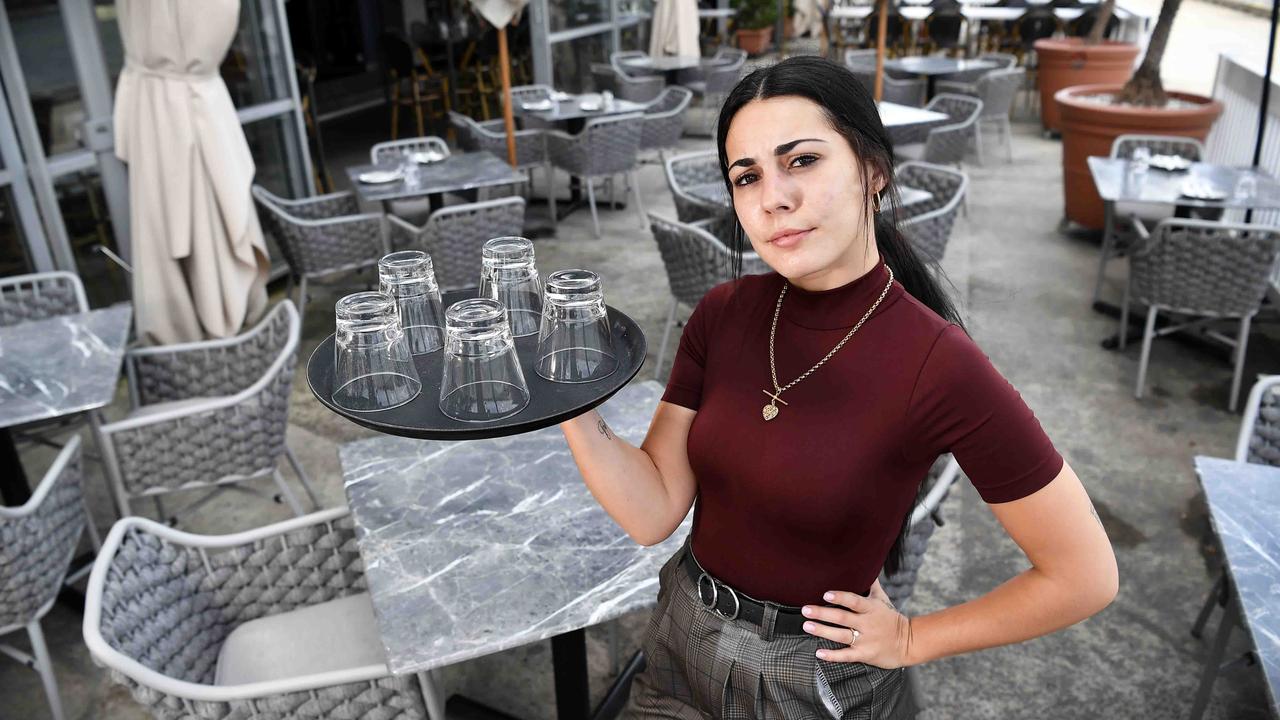
Experts say innovative solutions are needed to breathe life back into depressed CBDs.
Queensland University of Technology urban planner Mark Limb said the Covid-19 pandemic had hammered CBDs and they were still struggling to recover amid high retail rents and cost-of-living pressures hurting consumer spending.
Dr Limb said cities such as Newcastle had bought up tenancies and used them as business “incubators” to “activate” CBDs and “give people a reason to come back into town again”.
He said large corporate retailers which dominated high-rent shopping centres had led to “very sterile” retail offerings, and more smaller independent traders were needed to create interesting choices for shoppers.
“We talk a lot about affordable housing but we very rarely talk about affordable business space, particularly for very small businesses,” he said.
“Rents are a huge cost and I think that’s what has killed off a lot of small (retail) businesses. It makes cities more interesting if you have these quirky, interesting people running businesses as opposed to stock-standard, cookie-cutter type corporates.
“Markets are a great example of that but you could go further and have state or local governments actually purchase and operate affordable retail tenancies for small businesses.”
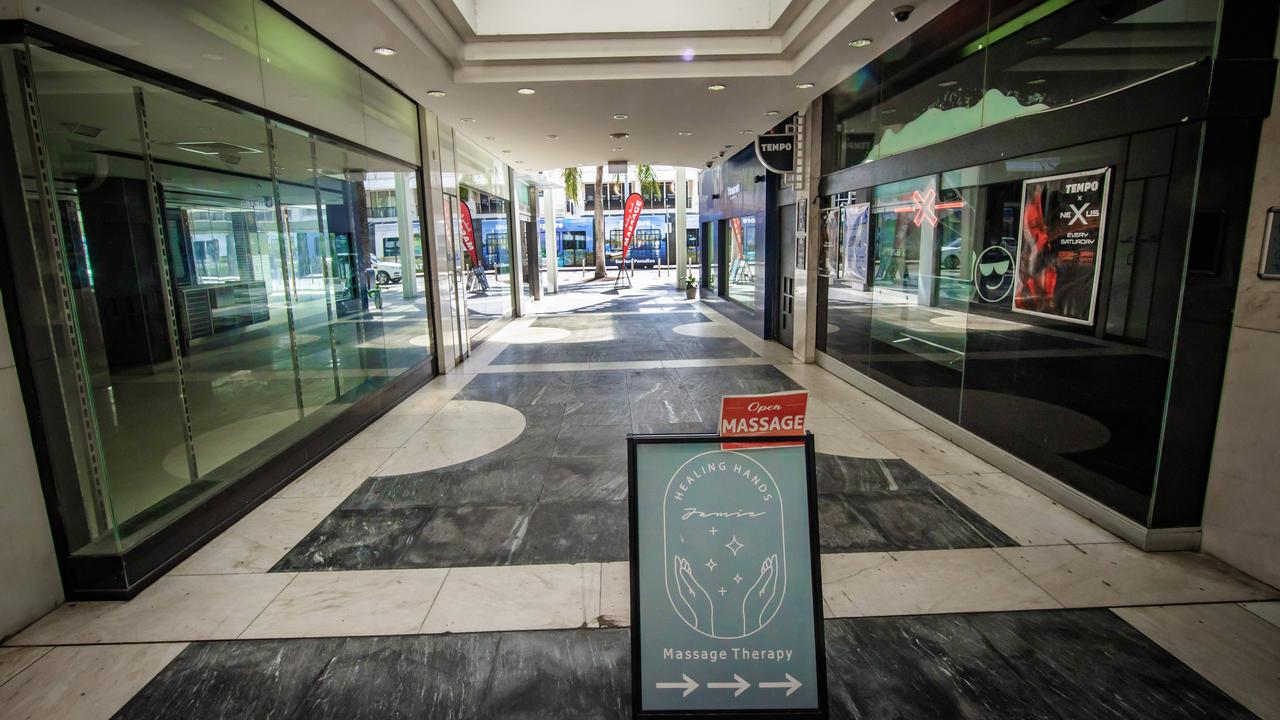
Dr Limb said councils also needed to “loosen the reins” to encourage more “spontaneous” activities and events in CBDs, such as Latin dances and music.
Fleur Brown, of the Australian Retailers Association, said tourists and international students were flooding back into the state’s CBDs but more needed to be done to inject “vibrancy” and make city hearts inviting.
Ms Brown said stakeholders including local and state governments, landlords and traders needed to work together on strategies such as twilight trading and campaigns offering incentives to entice people to come into town on certain days of the week and linger into the night.
“Hospitality and retail operators (could) get together to really strongly promote that to bring people into the city and get them to stay,” she said.
“The more people we have in the CBDs, the safer the cities feel and the more inclined families are to come in for their outings as well.
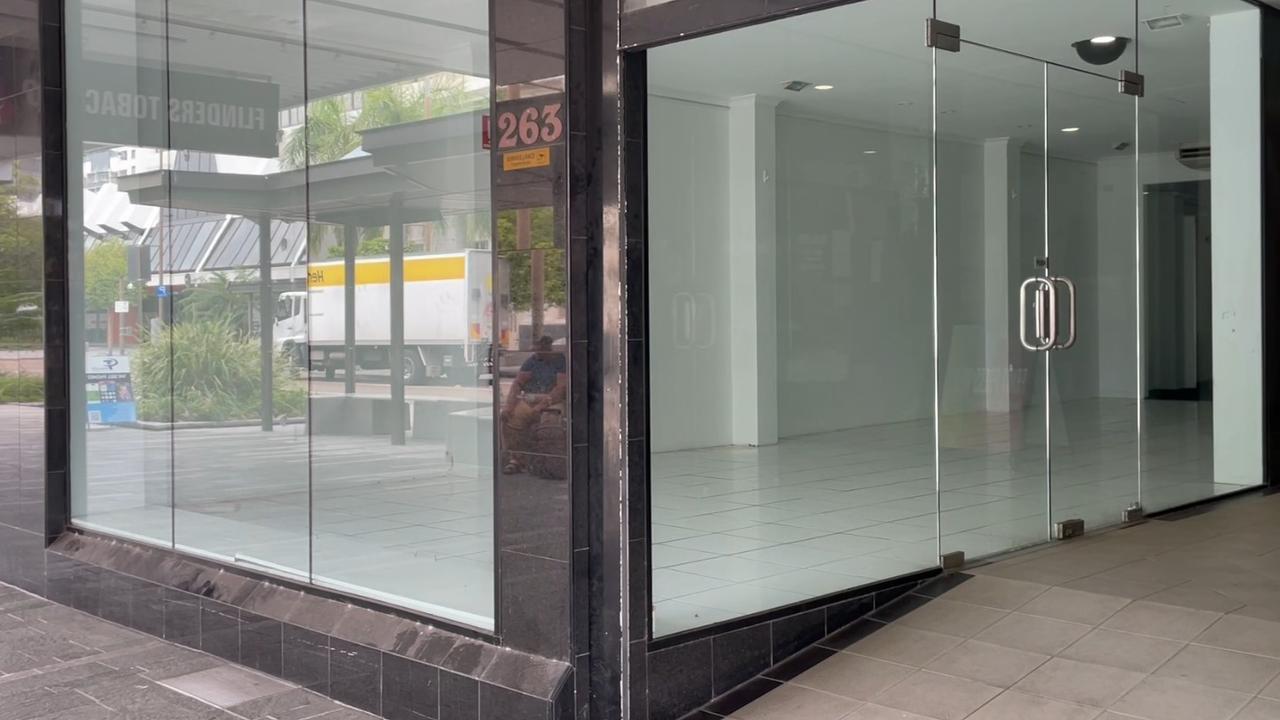
“Victoria, for example, is looking at twilight trading – adding an element of sophistication that you might see in global cities but is sort of missing a little bit here. All of that vibrancy is a really important part of the attraction giving CBDs that X-factor, and a reason to come into the city rather than going to a suburban mall.”
Ms Brown said there also needed to be more “creative use of (retail) space, such as pop-up shops and art galleries or transforming daytime businesses into funky bars at night, while empty shops could be dressed up with colourful hoardings.
Brisbane deputy mayor Krista Adams said the $1.4b, 24-hour Brisbane Metro electric people mover system, due to open later this year, would radically improve CBD access and appeal while the $3.6b Queen’s Wharf and $2.5b Waterfront Brisbane developments would “change our city forever”.

“Our new Kangaroo Point Green Bridge which will be completed this year won’t just be a fantastic new connection but a must-do destination,” she said.
“There’s also plans for major new opportunities right in the centre of the mall, including above the Regent Theatre at Wintergarden and No. 1 Brisbane on the corner of Burnett Lane, Queen and George Streets.”
Surfers Paradise has 117 empty shops but Gold Coast Mayor Tom Tate said a $40m revitalisation approved by his council and a swag of new apartment projects by the likes of high-rise king Harry Triguboff would help transform the tourist mecca.
“I have great confidence in Surfers Paradise’s resilience and council will continue to support the jewel in our tourism crown,” he said.

“Landlords may need to look at rental rates in Surfers Paradise whilst we are waiting for the council and private investments to bear fruit and I encourage them to make sure their relationship with existing tenants is strong.”
Argentinian student Macarena Toyos, who has been living and studying on the Gold Coast for 12 months, said she was surprised to see so many empty shops in the heart of Australia’s tourist capital.

“It’s a bit sad – this place should be thriving,” she said.
Surfers local Kim Boddy said the state of Surfers Paradise was “disgusting”.
“It’s crazy,” she said.
“There isn’t even a fish and chip shop or a delicatessen. The rents are all too expensive.”
Cairns City Council planning director Ed Johnson said the CBD, with 115 empty retail tenancies, was “experiencing a transition like many CBDs across the nation as retail preferences and economic structures have shifted post-Covid”.
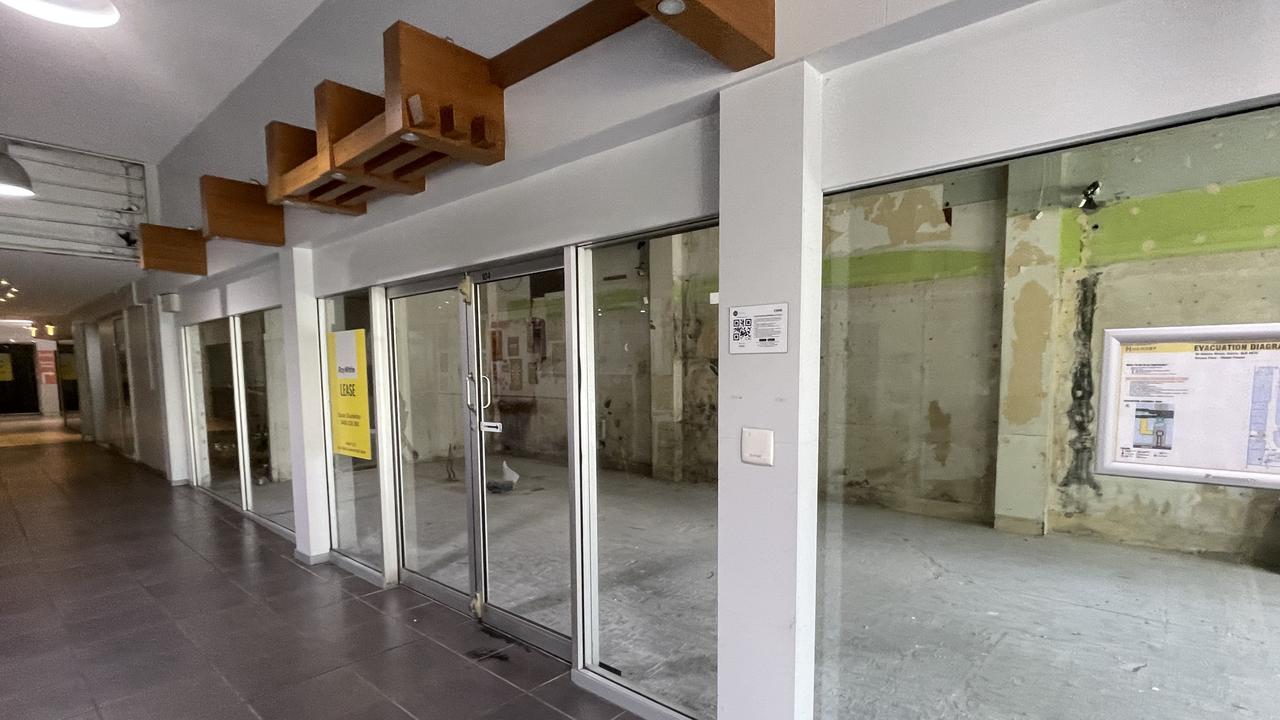
But he said the council was providing incentives including infrastructure charge waivers to encourage CBD development, with a 13-storey “bespoke” heritage tower approved this week.
“Cairns is seeing strong interest and demand within the CBD for residential development, high-value retail and entertainment activities aligned to our CBD Master Plan and a desire to create activity and entertainment precincts,” Mr Johnson said.
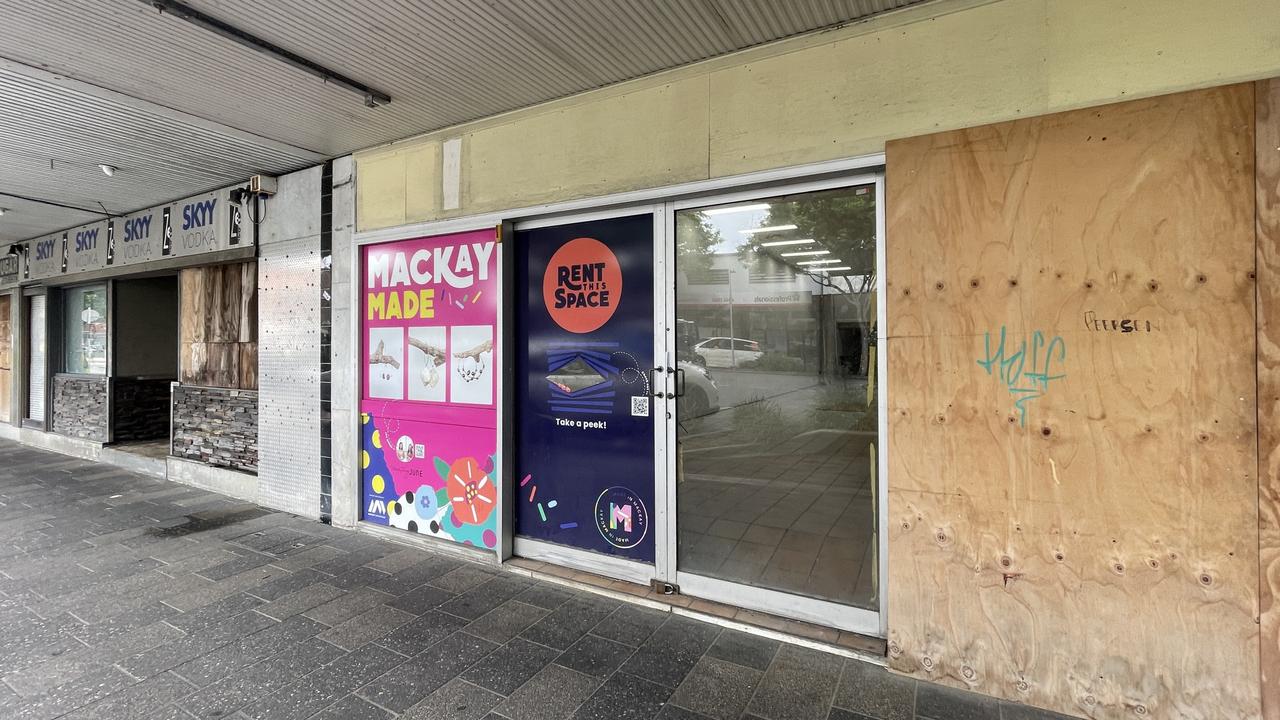
Argentinian student Macarena Toyos, who has been living and studying on the Gold Coast for 12 months, said she was surprised to see so many empty shops in the heart of Australia’s tourist capital.
“It’s a bit sad – this place should be thriving,” she said.
Surfers local Kim Boddy said the state of Surfers Paradise was “disgusting”.
“It’s crazy,” she said.
“There isn’t even a fish and chip shop or a delicatessen. The rents are all too expensive.”
Additional reporting Dylan Nicholson, Kathleen Skene, Leighton Smith, James Taylor, Zoe Devenport, Carlie Walker, Aden Stokes
Originally published as Ghost CBDs: Qld’s abandoned city centres with empty streets and closed stores






